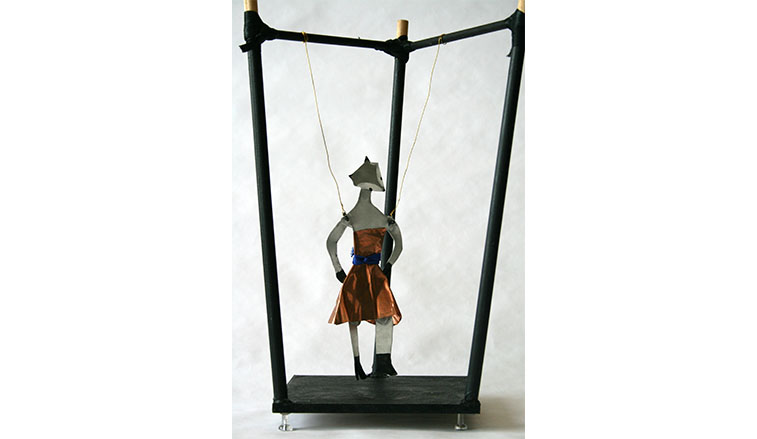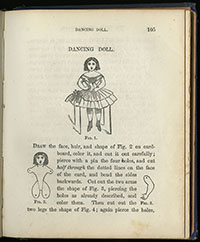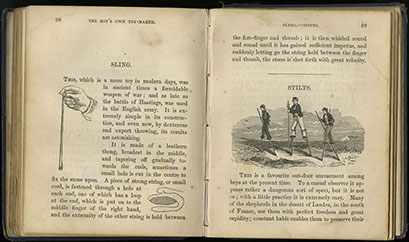
Exhibition
 Dancing Fox Lady
Dancing Fox Lady
Dancing Fox Lady, copper sheet, aluminum sheet, string, and wood. Inspired by Ebenezer Landell, The Girl’s Own Toy-Maker. Boston: Cyrus G. Cook, 1861; and Ebenezer Landell, The Boy’s Own Toy-Maker. New York: D. Appleton & Co., 1865.
Gendering of toys has not been around as long as one might think. In the early 1800s when toy companies started to become more prevalent and specialized, the firms realized that they could double profits by making toys specifically for either boys or girls, rather than just for children. These books from the Library Company’s collections showcase how such gendering affected toy production. For example, The Girl’s Own Toy-Maker is mostly about creating a doll house and its furnishings out of paper. Although pretty intricate in construction, when compared to the boats, flying objects, and sports apparatuses in the complementary boy’s book, it is still a pretty dishearteningly passive handmade toy.
Even today toys for girls are static, and meant to be pretty and looked at, while boys’ toys foster creativity and action. It is for this reason that I picked the dancing doll from the girl’s book, one of the few toys that actually did something, as a model for my sculpture. I took the basic structure and modified it into an animal on a stage. I also used metal instead of cardboard for more permanency. This was one of my favorite pieces to make.
 |
 |
